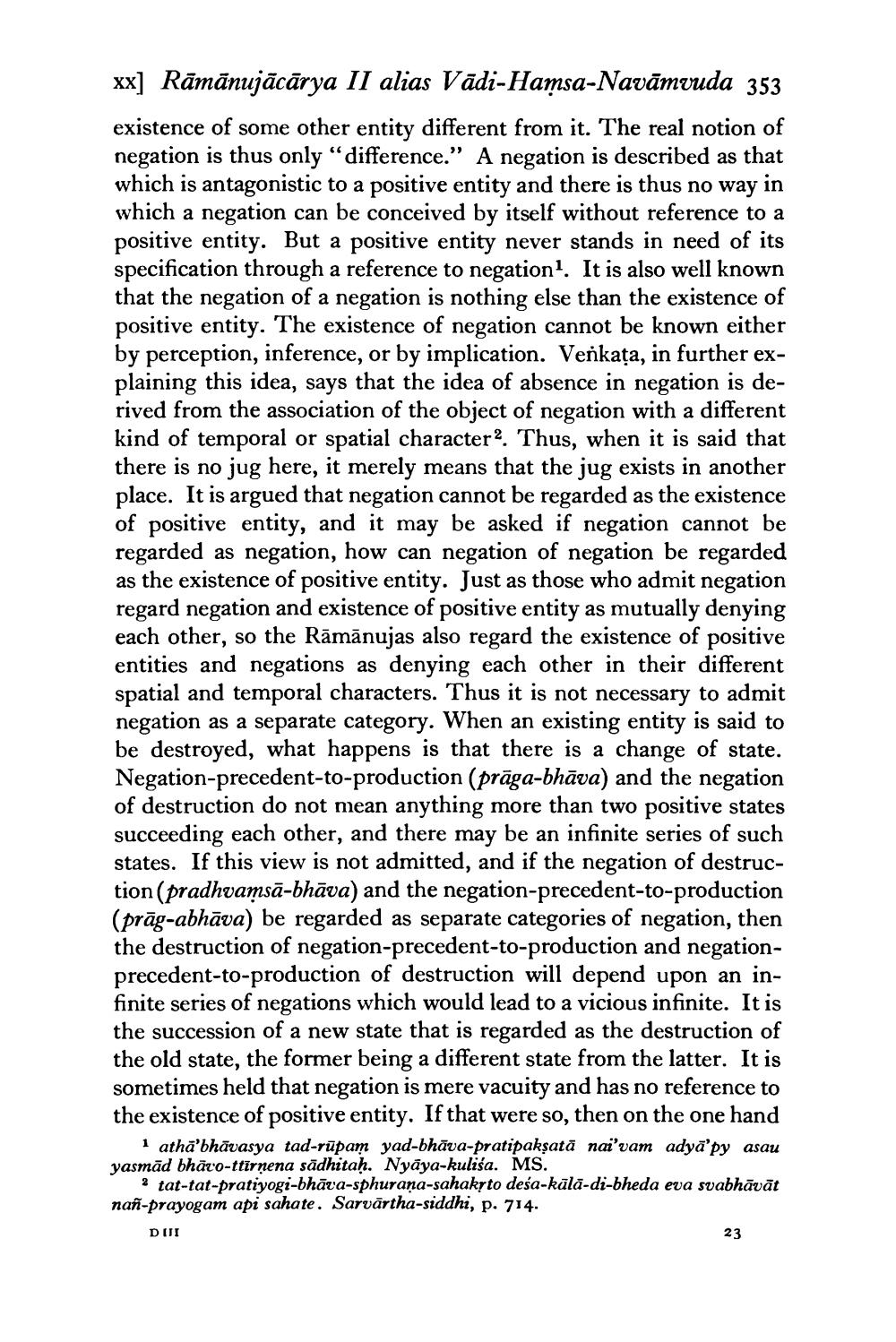________________
xx] Rāmānujācārya II alias Vādi-Hamsa-Navāmvuda 353 existence of some other entity different from it. The real notion of negation is thus only “difference." A negation is described as that which is antagonistic to a positive entity and there is thus no way in which a negation can be conceived by itself without reference to a positive entity. But a positive entity never stands in need of its specification through a reference to negation?. It is also well known that the negation of a negation is nothing else than the existence of positive entity. The existence of negation cannot be known either by perception, inference, or by implication. Verkața, in further explaining this idea, says that the idea of absence in negation is derived from the association of the object of negation with a different kind of temporal or spatial character. Thus, when it is said that there is no jug here, it merely means that the jug exists in another place. It is argued that negation cannot be regarded as the existence of positive entity, and it may be asked if negation cannot be regarded as negation, how can negation of negation be regarded as the existence of positive entity. Just as those who admit negation regard negation and existence of positive entity as mutually denying each other, so the Rāmānujas also regard the existence of positive entities and negations as denying each other in their different spatial and temporal characters. Thus it is not necessary to admit negation as a separate category. When an existing entity is said to be destroyed, what happens is that there is a change of state. Negation-precedent-to-production (prāga-bhāva) and the negation of destruction do not mean anything more than two positive states succeeding each other, and there may be an infinite series of such states. If this view is not admitted, and if the negation of destruction (pradhvamsā-bhāva) and the negation-precedent-to-production (prāg-abhāva) be regarded as separate categories of negation, then the destruction of negation-precedent-to-production and negationprecedent-to-production of destruction will depend upon an infinite series of negations which would lead to a vicious infinite. It is the succession of a new state that is regarded as the destruction of the old state, the former being a different state from the latter. It is sometimes held that negation is mere vacuity and has no reference to the existence of positive entity. If that were so, then on the one hand
1 athā'bhāvasya tad-rūpam yad-bhāva-pratipaksatā nai'vam adyā'py asau yasmād bhāvo-ttīrnena sādhitah. Nyāya-kulisa. MS.
? tat-tat-pratiyogi-bhāva-sphurana-sahakyto deśa-kālā-di-bheda eva svabhāvāt nañ-prayogam api sahate. Sarvārtha-siddhi, p. 714.
hä'bhāvasya tad-rupan Nyāya-kulisa. MS bala-di-bheda eva svabh
DUI




